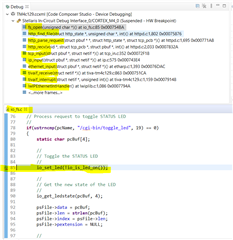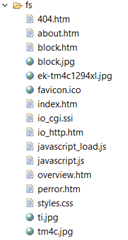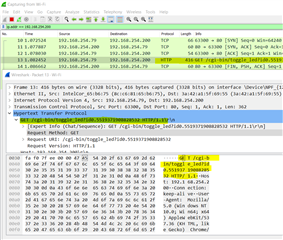Tool/software:
Hi,
I am new with TI and I am struggling a lot to find documentation for help.
I was able to execute the example provided in https://www.ti.com/lit/zip/spma080 and went trough the document 4C129x Ethernet Applications for Socket-Based TI-RTOS NDK. However there no much thing about SSI, CGI and all how everything works.
I also run enet_io and enet_lwip with success. I made some change to the HTML file just for fun and test purposes with /tools/bin/makefsfile -i fs -o io_fsdata.h -r -h -q.
I was able to make a Static IP without any problem.
Now my goal is to interact with the EK-TM4C1294XL via a web page. I know the code in enet_io does allow it but I can't find the logic behind of it. I do not know where I can find the documentation to make my own webpage and to interact directly with the board.
I did go to http://savannah.nongnu.org/projects/lwip/ as suggested from the example but once again I am completely lost.
So my main question is. How can I interact from a web server to the EK-TM4C1294XL and let say just make a blinking light from a port I decided.
Thanks.




